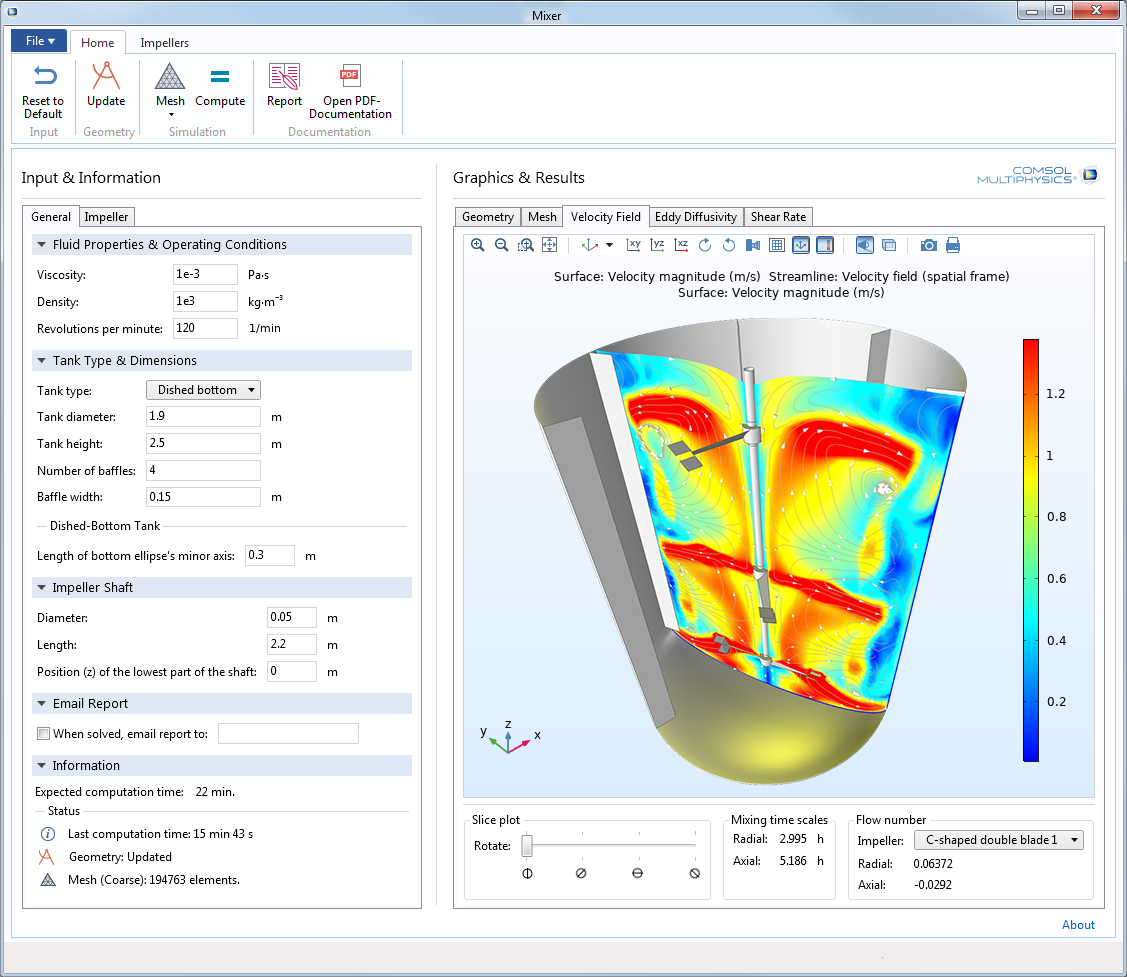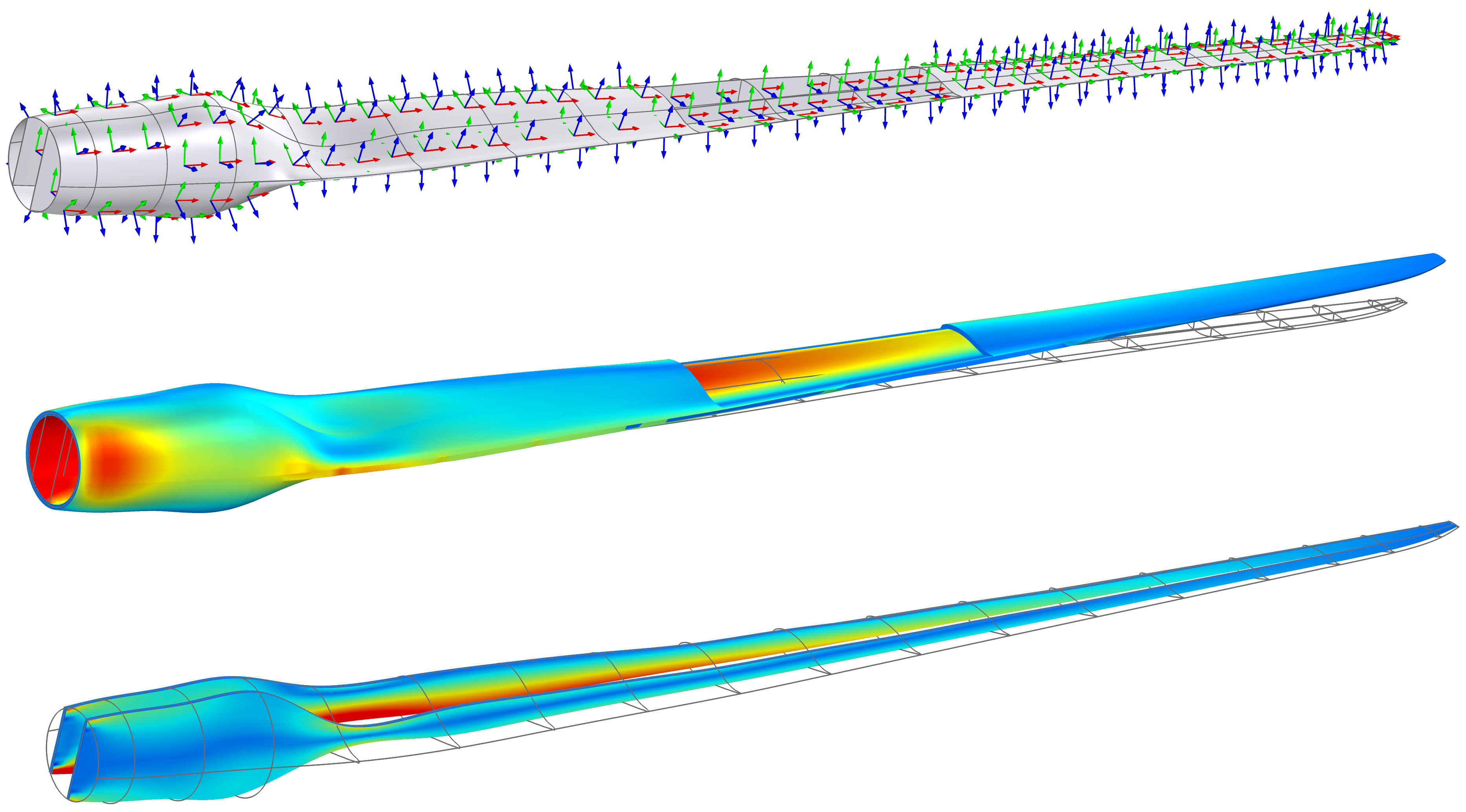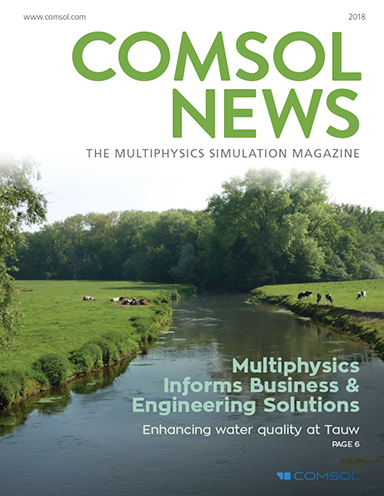
The COMSOL Compiler, a key capability introduced in COMSOL Multiphysics 5.4, enables modeling experts to create and distribute stand-alone simulation applications. Shown here is an example of a compiled simulation application where users can optimize a mixer. Image courtesy of COMSOL Inc.
Latest News
October 17, 2018
COMSOL Inc. has announced COMSOL Multiphysics version 5.4, the latest release of its integrated environment for creating physics-based models and simulation applications. Version 5.4 marks the debut of the COMSOL Compiler for creating standalone COMSOL Multiphysics applications. Also new is the Composite Materials module for modeling layered materials.
The new COMSOL Compiler enables simulation specialists to create and distribute standalone executable COMSOL Multiphysics applications. The company explains that neither COMSOL Multiphysics nor a COMSOL Server license are required to run a compiled application. Developers can distribute applications with no further license fees.

“With COMSOL Compiler we are ... letting specialists compile an application into a single executable file for unlimited use and distribution,” said Svante Littmarck, President and CEO, COMSOL, in a press statement. “This is a level of freedom that the industry has not seen before.”
The new Composite Materials module provides a dedicated set of modeling tools for working with layered materials. The company adds that by combining the Composite Materials module with new functionality for layered shells available in the COMSOL Heat Transfer and AC/DC modules, users can perform multiphysics analysis such as Joule heating with thermal expansion.
COMSOL Multiphysics version 5.4 also introduces numerous productivity improvements such as the ability to use multiple parameter sets in a model, including parametric sweeping over multiple parameter sets. Users can now also organize Model Builder nodes into groups and assign custom coloring schemes to geometry models. Among the various performance improvements is an updated memory allocation scheme that, the company says, gives several times faster computations in the Windows 7 and 10 operating systems for workstations with more than eight processor cores.

The AC/DC module features a new part library with fully parametric and ready-to-use coils and magnetic cores. The Computational Fluid Dynamics (CFD) module sees added functionality for large eddy simulations (LES) and, according to the company, significantly updated modeling tools for multiphase flow. Fluid flows also see functionality that enable fluid-structure interaction (FSI) for multiphase flow and multibody dynamics.
Electromagnetics enhancements include structural-thermal-optical-performance (STOP) analysis for ray optics. Structural simulations now provide shock response spectrum analyses and offer material activation for additive manufacturing. The Acoustics module sees acoustic ports and a new nonlinear acoustics Westervelt model.
Other version 5.4 highlights include a new topology optimization tool, new lumped models for batteries as well as an updated thermodynamics interface. Heat transfers now features heat radiation with diffuse-specular reflections and semi-transparent surfaces as well as a light-diffusion equation.
COMSOL Multiphysics, COMSOL Server and the COMSOL Compiler run on Windows, Linux and macOS operating systems. For more details on COMSOL Multiphysics 5.4, click here.
Go here for more information on the COMSOL Compiler
Learn about the new Composite Materials module here.
See what's happening in the COMSOL blog.
Register for an upcoming webinar on COMSOL Multiphysics 5.4.
Read Digital Engineering contributing editor Beth Stackpole's report on COMSOL Multiphysics 5.4.
See why DE's Editors selected COMSOL Multiphysics 5.4 as their Pick of the Week.
Sources: Press materials received from the company and additional information gleaned from the company's website.
Subscribe to our FREE magazine, FREE email newsletters or both!
Latest News
About the Author
Anthony J. Lockwood is Digital Engineering’s founding editor. He is now retired. Contact him via de-editors@digitaleng.news.
Follow DERelated Topics






